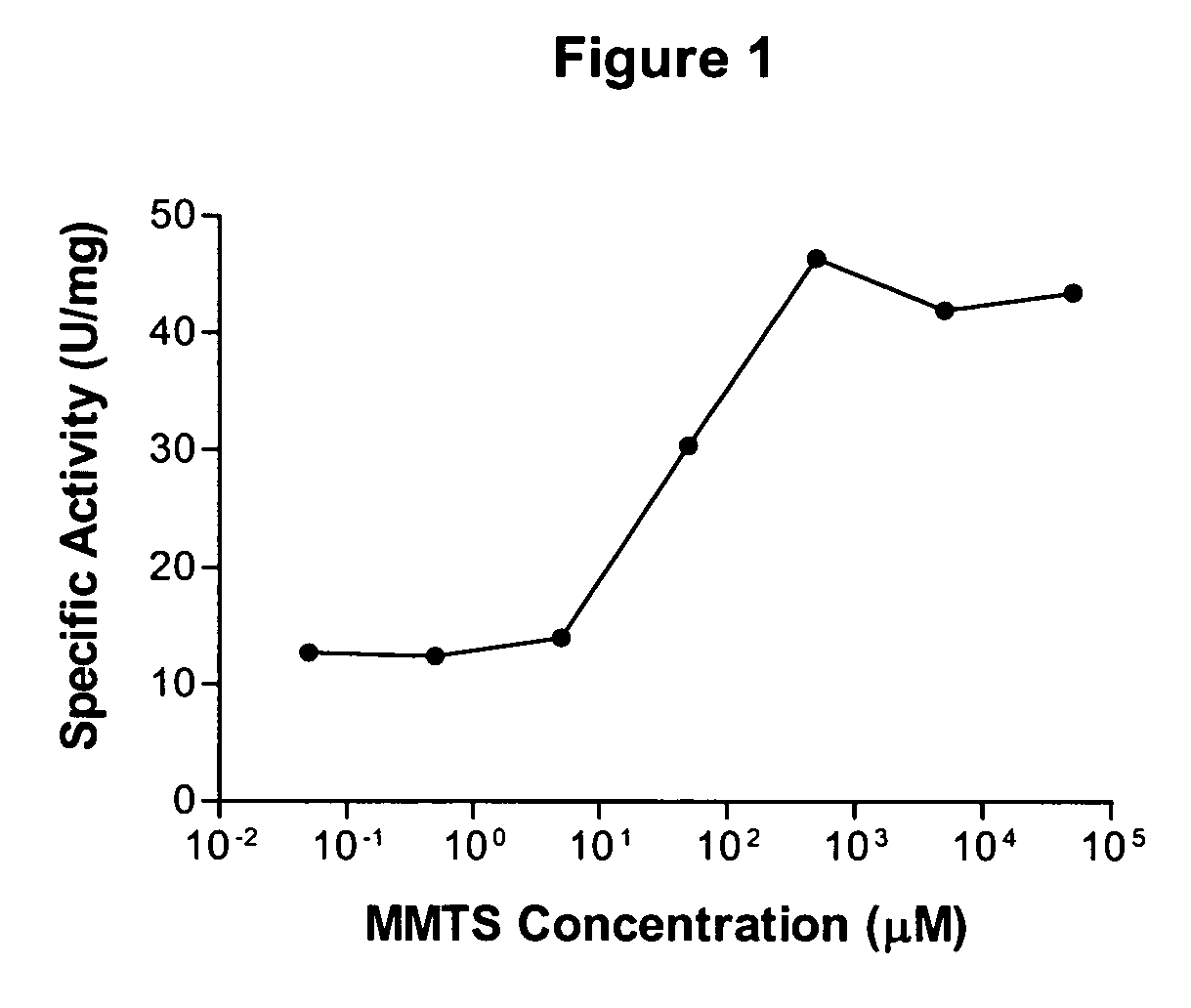Modified human acid sphingomyelinase having increased activity, and methods for making the same
a technology of sphingomyelinase and modified human, which is applied in the direction of peptide/protein ingredients, drug compositions, enzymology, etc., can solve the problems of lysosomal storage disease termed niemann-pick disease, inability of the body to break down sphingomyelin, and inability to normalize cellular function
- Summary
- Abstract
- Description
- Claims
- Application Information
AI Technical Summary
Benefits of technology
Problems solved by technology
Method used
Image
Examples
example 1
rhASM Production
[0044]Recombinant human ASM protein (rhASM) was produced using Chinese Hamster Ovary (CHO) cells transfected with a vector containing a full-length human ASM cDNA, obtained from the IMAGE Consortium (GenBank Accession AI587087). PCR products were cloned into mammalian expression vectors containing a DHFR selectable marker. Plasmids were sequenced through the entire open reading frame to insure fidelity of the intended sequence. DHFR deficient CHO-DXB11 cells were transfected using lipofectamine (Invitrogen) and selection was carried out in nucleotide deficient media supplemented with 10% dialyzed FBS and 0.2 μM methotrexate (CalBiochem). rhASM expression levels were further boosted by subjecting the uncloned pools to incremental increases in methotrexate concentration. This process generated several uncloned pools that maintained high level rhASM expression upon the withdrawal of methotrexate. The protein was purified from the CHO-conditioned media by conventional or...
example 2
[0045]rhASM was expressed in a stably transfected recombinant CHO cell line. After harvest of the secreted protein, it was observed that the rhASM activity in the conditioned media increased under certain conditions of storage. A study was carried out to monitor the activity change by incubation at three storage temperatures. It was found that rhASM activity is stable if the harvest media is stored at −80° C., with no change seen over a 160-day period. However, a large increase in ASM activity was seen upon storage of the harvest media at −20° C. There was only a slight increase in activity when the media was stored at 4° C.
[0046]To determine whether the increase in activity at −20° C. was due to a change in the specific activity of rhASM itself or whether it might be due to interaction with other molecules (e.g., association with an activator or loss of an inhibitor), rhASM was purified to homogeneity from harvest media. One preparation was made from fresh ha...
example 3
[0049]Samples of low-activity and high-activity forms of rhASM were first concentrated in 20 mM sodium citrate, 150 mM NaCl, pH 6.0. Free thiol content was assessed at 412 nm using 0.8-1.2 mg rhASM and 0.5 mM DTNB in native and denaturing buffers and incubated for 10 minutes at room temperature before reading absorbance values. Results were compared to a cysteine standard curve. The results established that the low-activity form of rhASM contained one free thiol, whereas the high-activity form contained no free thiols.
PUM
| Property | Measurement | Unit |
|---|---|---|
| pH | aaaaa | aaaaa |
| concentration | aaaaa | aaaaa |
| pH | aaaaa | aaaaa |
Abstract
Description
Claims
Application Information
 Login to View More
Login to View More - R&D
- Intellectual Property
- Life Sciences
- Materials
- Tech Scout
- Unparalleled Data Quality
- Higher Quality Content
- 60% Fewer Hallucinations
Browse by: Latest US Patents, China's latest patents, Technical Efficacy Thesaurus, Application Domain, Technology Topic, Popular Technical Reports.
© 2025 PatSnap. All rights reserved.Legal|Privacy policy|Modern Slavery Act Transparency Statement|Sitemap|About US| Contact US: help@patsnap.com


